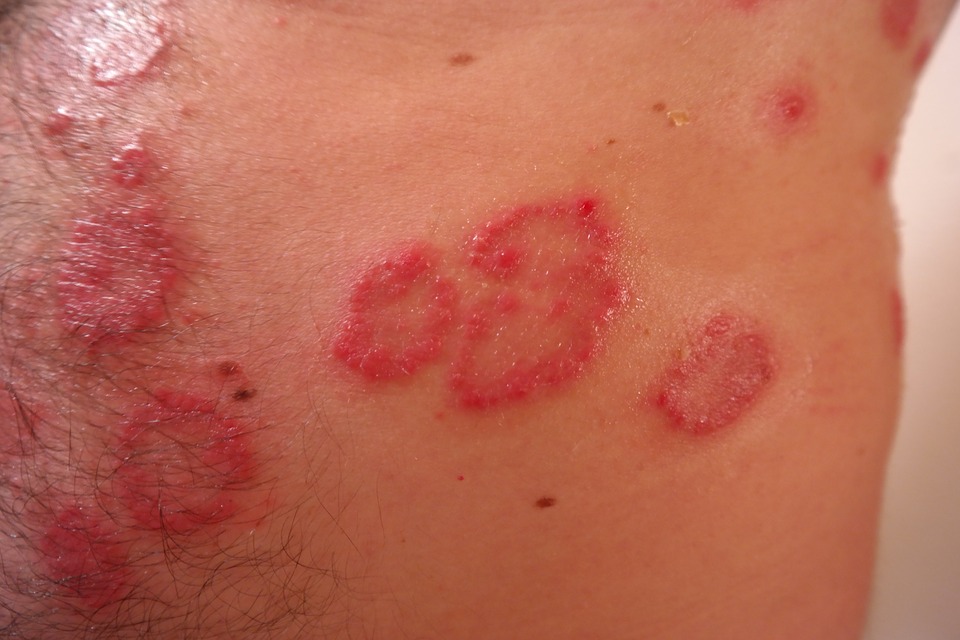Treatment And Management Of Psoriasis
“As the disease progresses, it covers more extensor areas of the hands and legs, thighs and chest, abdomen and back”
Psoriasis is not an infectious disease. Its chronic and recurrent in nature and in many cases, it is genetic. It appears on the extensor areas of the body as mica-like scaly patches, which shows pinpoint bleeding points, when the scales are detached. The disease is prone to increase in dry and cold weather and regresses during the summers and during the moist season. Psoriasis has many variants.
The prevalence of this disease is seen all over the world, but people in the countries where winter prevails, are common victims. Also, this skin ailment can be seen in any age group – males, females and children and gets aggravates in the winter season and during stressful conditions.
How Psoriasis Develops
The most common affected site of psoriasis is on the extensor surface of the skin. Elbow, knee and scalp area are the most common areas, involved initially. As the disease progresses, it covers more extensor areas of the hands and legs, thighs and chest, abdomen and back. A severe form of psoriasis may be of different types, seen on the palms and scalp skin, soles of the feet or on the whole body.
Some patients develop joints problems called arthropathy. Also, many patients have pits in their nails, called nail dystrophy and conditions of this kind may be associated with diabetes. The main lesions are skin scabs which look like silver colour flakes or red flakes. When a patient tries to the remove scab or brown skin, it bleeds. This is called Auspitz’s sign. Additionally, some diseases may also look like psoriasis and these are called psoriatic form conditions.
Treatment and Management of Psoriasis
Creams Lotions Ointments
There are many different modalities of treatments of this disease and different types of local applications are used to treat it. Salicylic acid in three-six per cent ointment alone or in combination with some topical steroids can remove the flakes of skin with Its keratolytic effects. Mild creams are used on the face, whereas on the scalp, lotion base medicines are used. On the body, stronger medicines are applied.
Oral Medicines
Oral tablets of Methotrexate are prescribed and it works well. However, this medicine provides the best result, if it is applied under proper guidance of a dermatologist.
- Methotrexate suppresses the immune system or targets particular immune responses associated with psoriasis and reduces the growth of skin cells. This medicine can be taken in a pill, liquid or injection form. Nevertheless, side effects should be taken into consideration, as improper use of all the drugs, disturbs the disease pattern and may worsen the condition.
Cyclosporine
This medicine is approved for use in psoriasis as it suppresses the immune system and slows the growth of certain immune cells. But before applying Cyclosporine, make sure you are guided by your physician.
Apremilast
This is a new approved drug to treat psoriatic arthritis and plaque psoriasis in adults.
Therapy And Laser Treatments
Exposure to sun’s UVA and UVB rays are important for psoriasis patients and it can be done either naturally or through light therapy. Here are the three types of light therapy applied for psoriasis.
Light Therapy
- Ultraviolet B (UVB) Therapy
This therapy uses the same type of rays like sunlight. It can be used with cream, lotions and ointment or when creams don’t respond. The UVB light enters the skin and slows the growth of certain immune cells. There are several forms like broadband UVB and narrow-band UVB therapy. In another therapy, special medicines are applied to the skin before the UVB light exposure. The narrow-band therapy is a more popular treatment therapy worldwide. - PUVA Therapy (Photo Chemotherapy)
A special medicine called Psoralen is applied to the skin before UVA light. This medicine is applied to the skin or taken as oral medication. UVA lights that are exposed for 30 minutes to two hours slow down the growth of skin cells. - Narrowband UVB
In last two decades, NUVB has proved its success over other modalities of treatments. This treatment is required at less frequent intervals and along with medication, it helps in reducing the number of recurrences.
Laser Treatment
Laser is light amplification of stimulated emission of radiation. It is a form of specialized tiny beams of coherent rays. There are different types of lasers. But for these cases, Excimer B Laser, Monochromatic Excimer Light and Pulsed Dye Laser are in use for the last two-three decades. The main advantage of this treatment is that it does not affect the surrounding normal skin. Laser treatments aim to slow down the rapid growth of skin cells in psoriasis. They also help to smooth out the scaly skin and reduce inflammation.
Nanotechnology
Currently, the latest treatment is a Nanotechnology device which is used for localized psoriasis on the palms or soles or the scalp and other small areas. This treatment helps one to avoid oral tablets and the duration too, is very short with a speedy recovery. Hence, in the near future this technology will be the mainstay of psoriasis treatment.
Health Tip
The ultimate goal of psoriasis treatment is to keep the disease under control and to decrease the risk of side effects and resistance to the drugs. Also, in order to avoid any unwanted situation, the associated treatment of diabetes or other disease management is vital.
